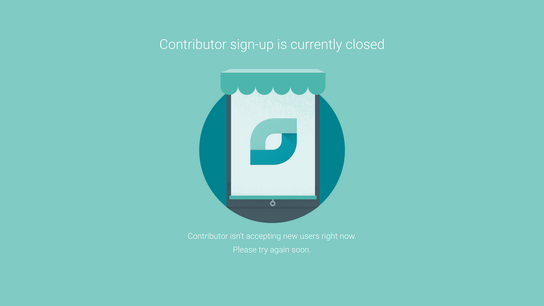Ten days ago, I asked “Whatever happened to Google Contributor?” Today, Google seems to have answered my question: “Contributor sign-up is currently closed.”
Google Contributor is a service where users could out-bid bad advertisements and hide ads while still supporting their favorite websites. This meant websites would load faster for subscribers, they wouldn’t have to deal with as many ads as usual, and they’d pay websites directly through their subscriptions. Optionally, subscribers could see cute cat photos (“meow mode”) or display their own photos in place of internet ads.
Today, the Contributor website was pulled offline and replaced by a notice saying that the service is no longer accepting new subscribers. It’s unclear whether Google is restructuring its ad-replacement subscription service, or whether they’re closing up shop on the experiment.
Google has never been very communicative about the Contributor program, and has stayed true to that by neither making an announcement to publishers or its existing subscribers.
Update (): via Nate Hoffelder on Twitter: “Google told me: We will have a new [Contributor] version early next year and have stopped sign-ups for the old one in the interim.” Google should have just said this publicly instead of closing shop without an explanation.
Update (): Google has since changed the message to read “We’re launching a new and improved Contributor in early 2017!” and ask you to leave your email address to be notified when Contributor relaunches in 2017.
Update (): Contributor is back, and it’s very different.
Considering the point I made a few days ago about how Google has never bothered to advertise the Contributor service, I do believe it’s very likely that the service is being discontinued. If I were to speculate wildly, Google could perhaps be moving to merge it with YouTube Red. Red is an ad-free subscription service, but unlike Contributor that sought to replace ads all over the web, Red is only hiding ads on YouTube.
For anyone looking for alternatives to Google Contributor, you can take a look at services like Webpass.io, Brave Payments or Flattr. None of these services will achieve the same level of ad-replacement with the same level of publisher support as Google Contributor. Contributor had instant adoption through its integration with the Google AdWords ad-auctioning system and massive distribution through the Google AdSense ad-platform.
Update (): Webpass.io has discontinued all services.
Webpass.io requires publishers to sign-up and make changes to their website to hide ads for visitors with the Webpass.io browser add-on installed. Currently, only about 150 people have installed this extension, according to the Firefox and Chrome add-on stores. Webpass.io has been awfully quiet in social media and their blog after they introduced paid plans .
Brave Payments requires its users to be comfortable with paying in Bitcoins and by changing to the Brave web browser. I believe these two requirements will thwart any chance Brave has of reaching mainstream adoption.
Brave Payments should be a browser extension first, and then maybe do a whole web browser (and get security right) at a later date. It’s hard to get someone to change their browsers, but supplementing their experience with a browser add-on could be more achievable. Brave has been collecting money from users for three months already, but have yet to pay anything to publishers.
The most interesting option at this point seems to be Flatter Plus, a cooperation between the micro-donation service Flatter and the popular browser ad-blocking extension AdBlock+. The service was originally thought to launch around August, but have yet to start signing on publishers and users.
Flattr+’s partnership with one of the world’s most popular extensions will ensure they’re exposed to a large audience of users who want to hide ads and who are comfortable with installing browser extensions. It could prove to be a recipe for success.
